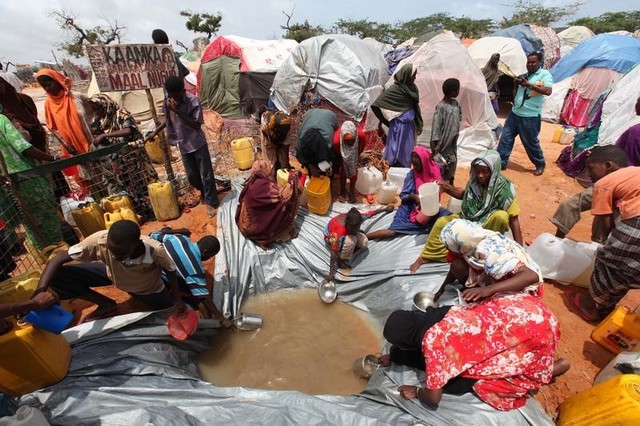IDPs now outnumber refugees globally but attract little attention-report


Internally displaced people now account for the highest number of displaced people in the world more than those pushed across borders, a new report has said warning despite this, fewer resources go to addressing the plight of those pushed from homes within their borders.
In 2016, the report by the Norwegian Refugee Council (NRC) and Internal Displacement Monitoring Centre notes conflict and natural disasters now uproot more people from their homes but within borders adding at least one person was displaced every second in 2016.
“In 2016, one person every second was forced to flee their home inside their own country. Internally displaced people now outnumber refugees by two to one. It is urgent to put internal displacement back on the global agenda,” said Jan Egeland, Secretary General of the NRC.
The report notes that conflict, violence and disasters caused 31.1 million new internal displacements in 2016. Conflict alone displaced 6.9 million people in 2016 with 2.9 million of these from Sub Saharan Africa. The Democratic Republic of Congo topped the list with a spike of 922,000 new displacements followed by Syria (824,000), Iraq (659,000), Afghanistan (653,000), Nigeria (501,000) and Yemen (478,000).
Internal Displacement Monitoring Centre (IDMC) warns lack of global attention on internal displacements risks spiraling a greater disaster since cross border displacement start with internal displacements.
“Despite internal displacement being the starting point of many onward journeys, it has been overshadowed by the current global focus on refugees and migrants.”
We need to acknowledge that, without the right kind of support and protection, a person internally displaced today may become a refugee, an asylum seeker or an international migrant tomorrow,” said IDMC Director Alexandra Bilak.
On Somalia, the report warns of circular movement of Somali refugees caused by unstable conditions for returnees from Kenya and Ethiopia. More and more returnees, the report says are forced to return to country of origin with 500 in March alone returning to Dadaab camp in Kenya despite being resettled by the UN refugee body UNCHR in Somalia.
“Returnees are coming back to a country where around half of the population are in need of emergency food assistance, and all 12 designated return areas are affected by food insecurity,” the report notes.
Of those who did return under the voluntary repatriation scheme in 2016, the vast majority moved to three of 12 designated return areas – 50 per cent to Kismayu, 22 per cent to Baidoa and 19 per cent to Mogadishu.
At least 1.1 million people are internally displaced in Somalia with majority of them settling in south central regions.